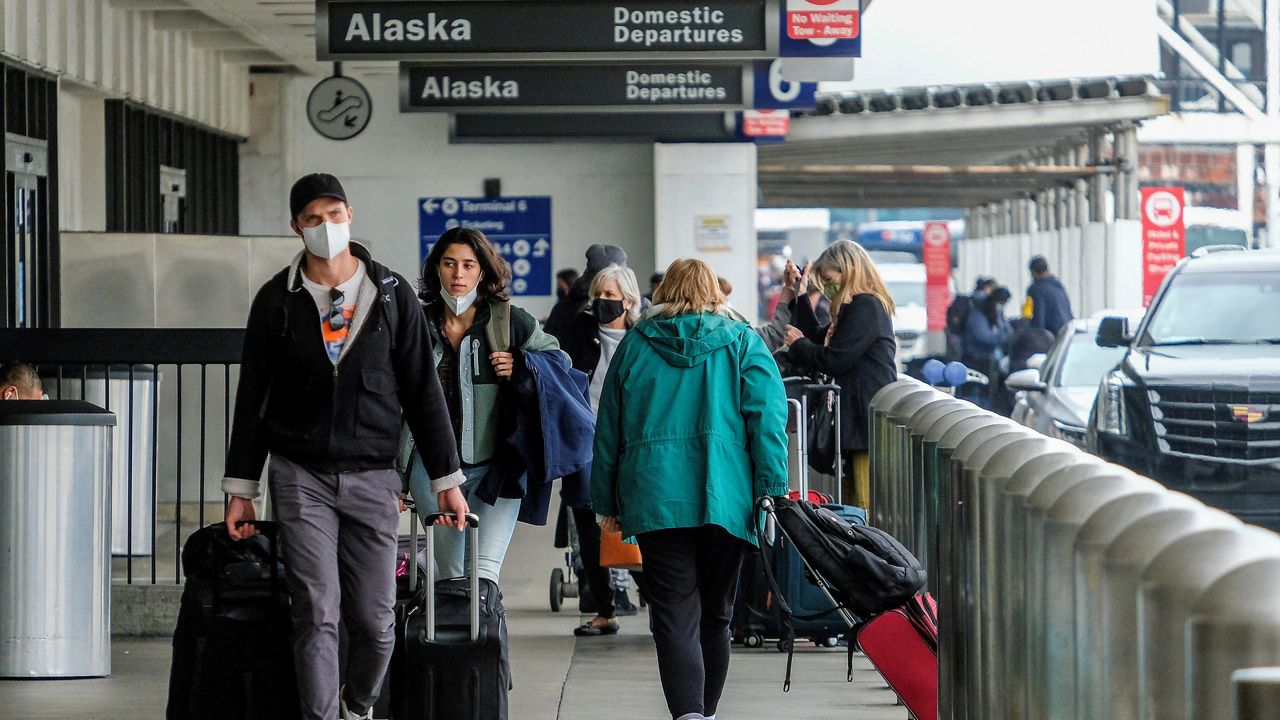This story is part of Spectrum News' special reporting on the coronavirus pandemic in Southern California. Join us at 9 p.m. on Thursday, March 11, for "A Year of COVID" on Spectrum News 1 or the Spectrum News app.
ANAHEIM, Calif. — In a matter of days, Visit Anaheim President and CEO Jay Burress saw the city's tourism business and economy collapse before his own eyes last year.
First, the Anaheim Convention Center closed on March 12. That same day, Major League Baseball announced that spring training would be canceled, and the baseball season for the Anaheim Angels and the rest of the league would be delayed. A couple of days later, Disneyland shuttered its doors, and the owner of the Anaheim Ducks, who also oversees the management of the Honda Center, postponed its games, live concerts, and events.
What were supposed to be temporary closures of the city's main economic drivers continues to this day.
"It's been a nightmare beyond anything that we can imagine," Burress said.
As the one-year anniversary of the coronavirus shutdowns approaches, all one needs to do is visit Anaheim's once-bustling resort district and Platinum Triangle to see the pandemic's economic impact.
Before the pandemic, Katella Avenue and Harbor Boulevard would be filled with cars on the street and tourists on the sidewalks. On any day of the week, it was normal to see flocks of families wearing Mickey Mouse ear hats and Disney T-shirts stream out of the hotels that line the block and walk towards Disneyland and Disney California Adventure gates.
On the other side of the street, people wearing business suits could be seen bustling towards the convention center for a meeting or a convention.
Just a few miles away, cars would line up to enter Angel Stadium and the Honda Center during hockey and baseball season. At night, it was common for people to see a concert or live performance at the House of Blues at the Anaheim Gardenwalk, the Honda Center, or at the City National Grove.
These days, those venues are either sitting vacant or operating under a different use.
The Anaheim Convention Center, which usually hosts more than 200 events and conferences a year, was first a COVID-19 testing location and now a mass vaccination point of dispensing (POD) site. For most of the year, Disneyland and Disney California Adventure remained closed, but its shopping strip, Downtown Disney, has been open since July. Angel Stadium and Honda Center were closed most of this past year.
The closures of the city's sports stadiums, convention centers, and theme parks, and other venues have had an enormous toll on the city's finances.
"There is no doubt the past 12 months will go down as one of the biggest events to impact our city," said Mike Lyster, spokesman for the city of Anaheim. "We have seen significant fires, the great recession, and other incidents like that. But this one, the duration of it is what we're going to look back on."
Anaheim relies heavily on tourism dollars. In 2019, pre-pandemic, the city brought in more than 24 million visitors. Disneyland alone brought in about 19 million visitors. The Angels annually attract more than three million fans in the stands. Visitors to Anaheim make up nearly half of the 50 million visitors that visit Orange County.
"The model of Anaheim is visitors come here, they stay at our hotels and spend money, and that in turn brings money for our city that we use for police, libraries, community centers, our fire department, and that has been upended in the past year," Lyster said.
The lack of tourism into the area forced many hotels and small businesses to close. The city faces a $115 million budget deficit that they need to figure out how to balance by the end of the year.
As part of a cost-cutting move, the city offered and had about 100 city workers leave for early retirement. The city also stopped some tree trimming services and deferred some vehicle purchases.
The closure of Disneyland Resort also meant thousands of people were furloughed and laid off. Many of those Disney furloughed employees struggled.
At the height of the pandemic last year, Workers United Local 50, the union representing food and beverage cast members at the Disneyland Resort, held two food drives per month for their members. These were held at the union offices in Anaheim and would attract anywhere from 200 to 300 out of work and furloughed union members, explained Christopher Duarte, president at Workers United Local 50.
"We don't get a chance to speak to them since we just ask people to pop the trunk and we load in the food, but those who we do manage to speak with, and roll down the window, are grateful for the assistance," Duarte said. "We know some of our members are struggling with [getting access to] EDD (Employment Development Department) or SNAP (Supplemental Nutrition Assistance Program), so we wanted to try to alleviate them with one of their costs."
The union continues to host its monthly food drive, attracting 200 to 300 out-of-work members. Duarte said that number only reflects local members and believes the number of out-of-work members that need assistance is higher.
Lyster added that the city's unemployment was at its highest point at 12% or about 20,000 residents. The city is currently at 9% unemployment, or about 15,000 still unemployed.
The tragedy, though, is the loss of life due to COVID-19. According to Lyster, more than 750 Anaheim residents died of complications caused by COVID-19. That is the most number of deaths in a city in Orange County.
"That is the biggest and highest cost of this," Lyster said.
Burress has had to furlough or lay off 60% of his staff during the pandemic. He noted that more than 300 events at the Anaheim Convention Center were canceled, which would have a $2 billion economic impact on the Anaheim and Orange County region. Another 330 events are on hold.
Lyster said there is a bright spot. Coronavirus case counts are going down. People getting vaccinated are up. Anaheim's super POD sites at a Disneyland Resort parking lot and the Anaheim Convention Center have vaccinated more than 180,000 people to date.
After a year of asking for reopening guidelines, the state updated its Blue Print for a Safer Economic plan, which allows Disneyland, Disney California Adventure, and other major theme parks across the state to reopen as early as April 1. The state has also paved the way for live sporting events to come back.
Burress and other city officials hope that the governor will next release reopening plans for the convention center.
"A year later, and we're starting to see encouraging signs," Lyster said. "It's great now that there is hope, and we're turning a corner. We're cautious but optimistic."









